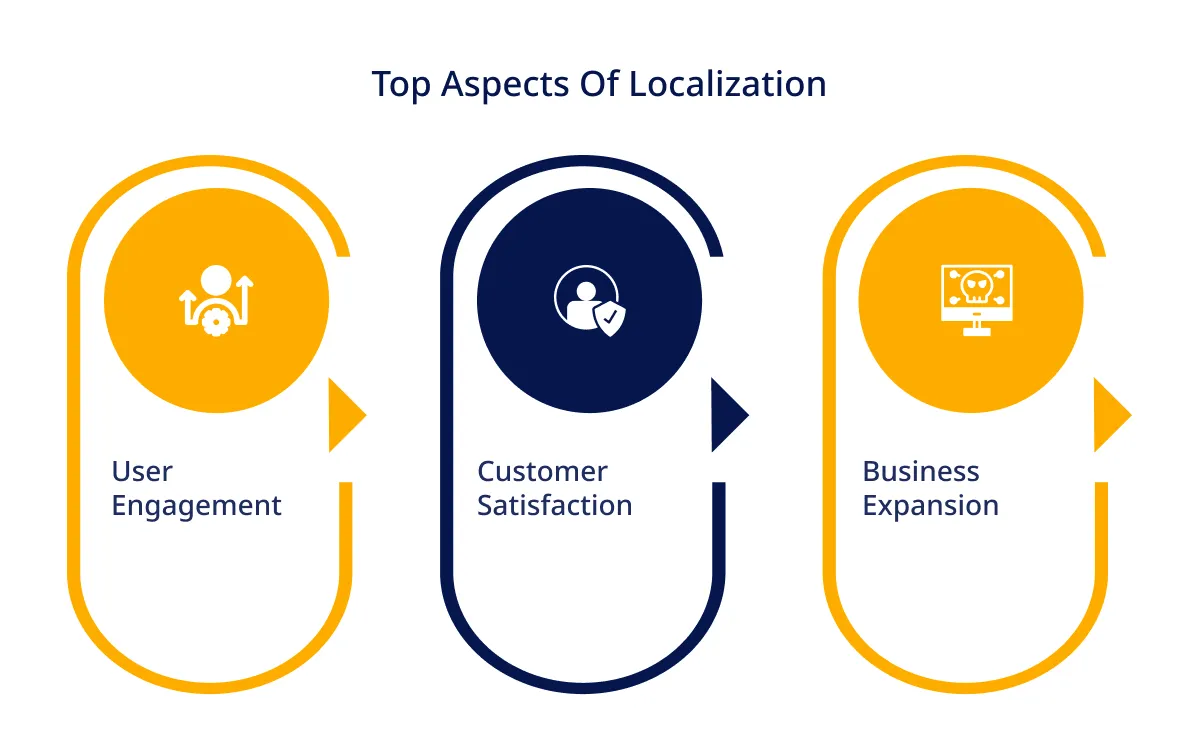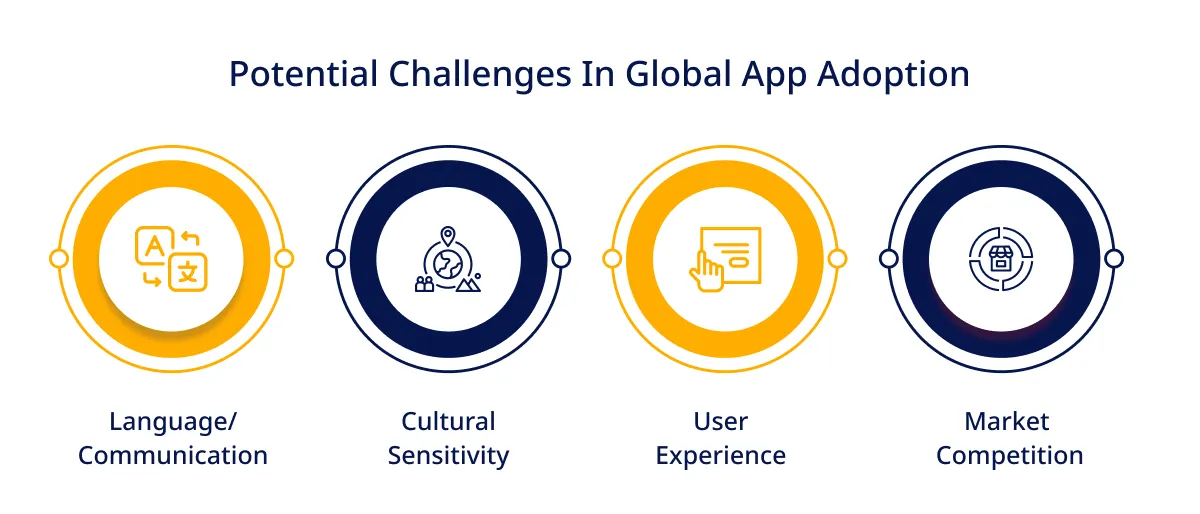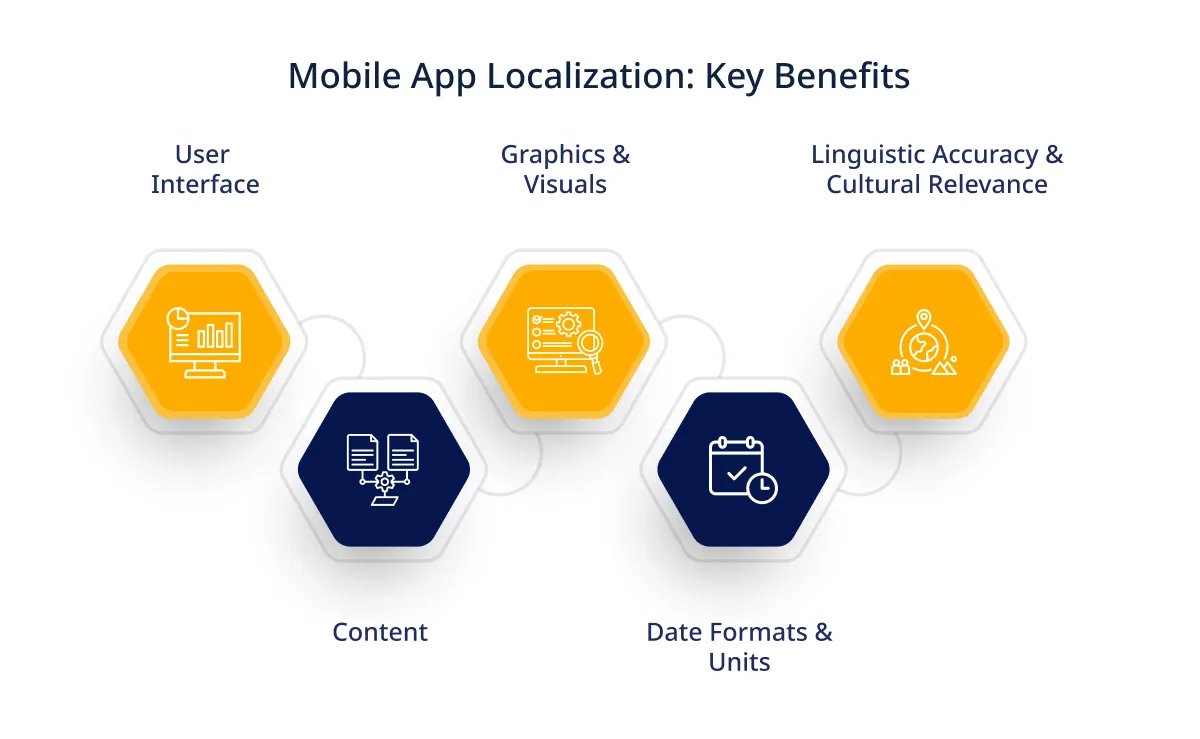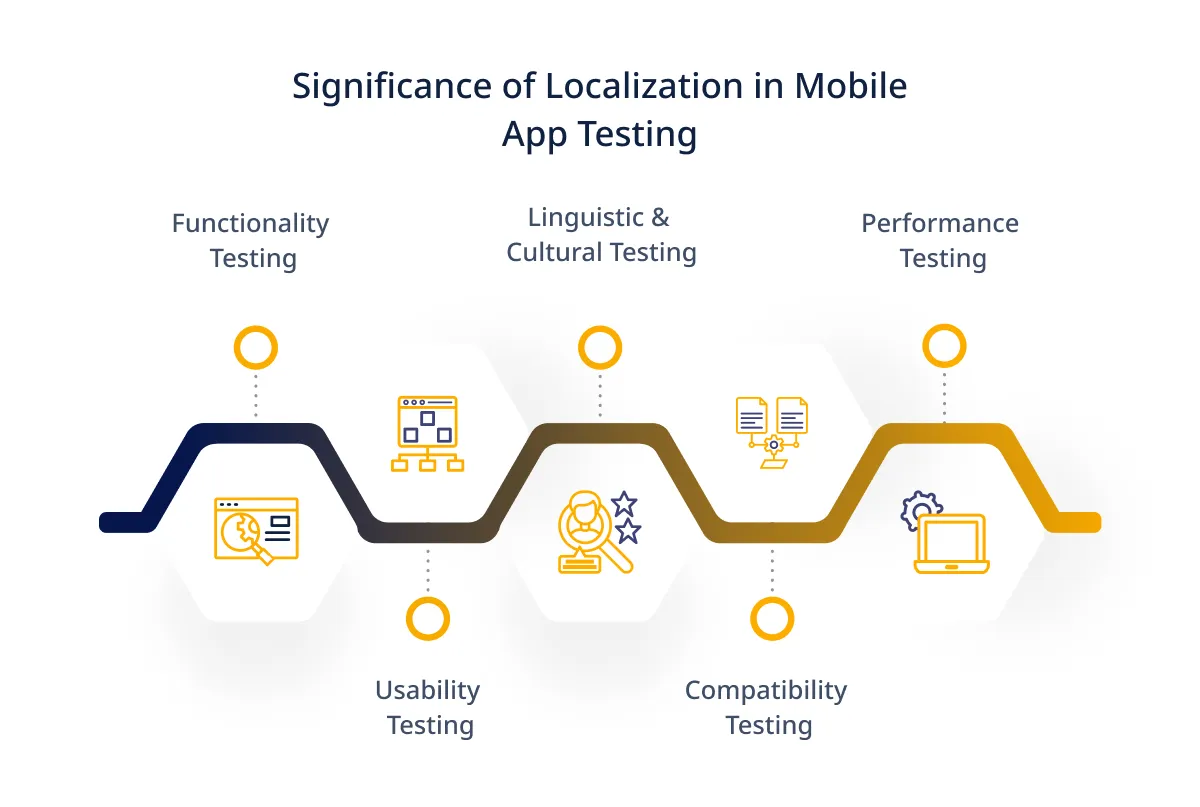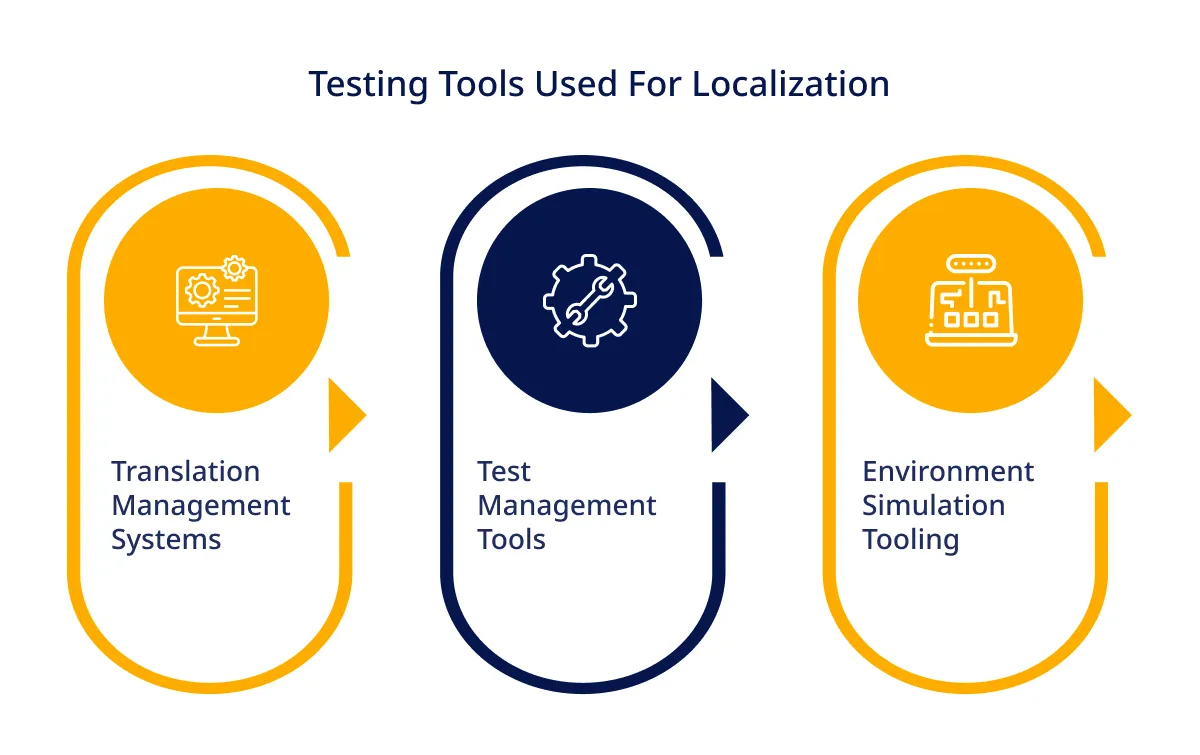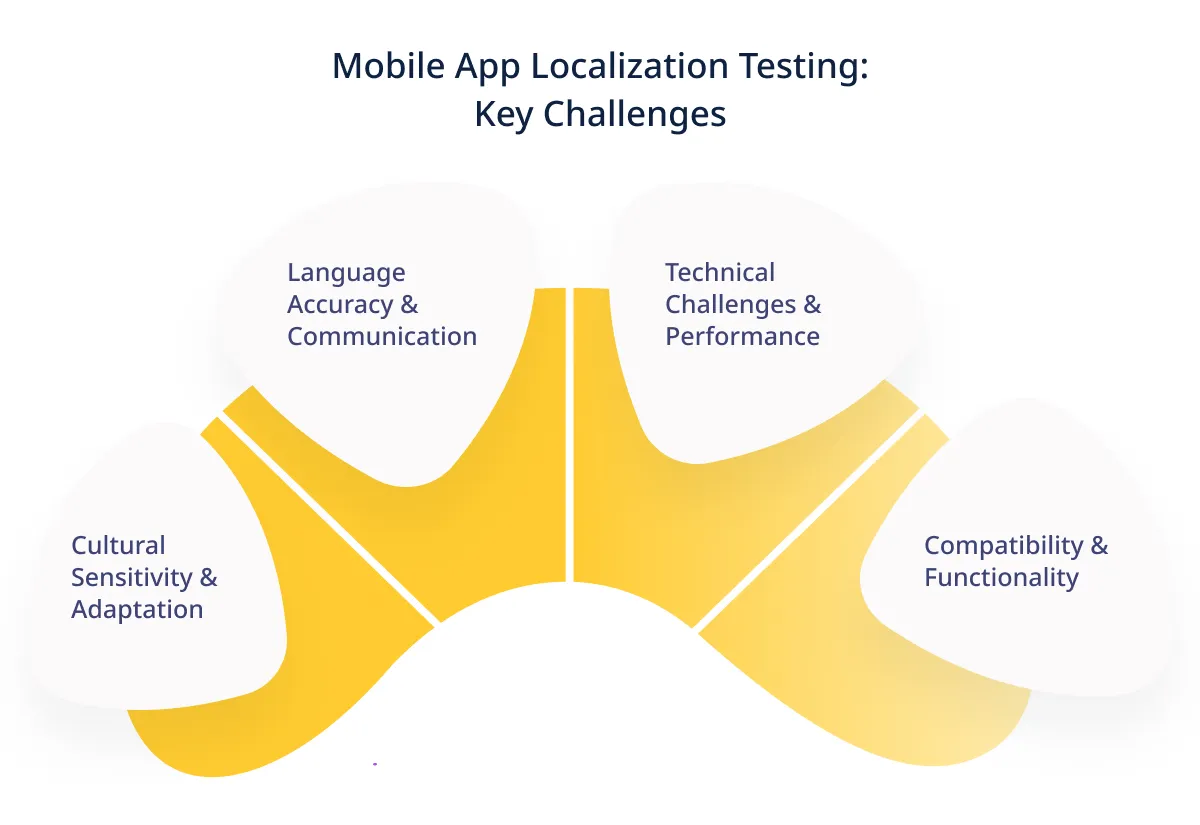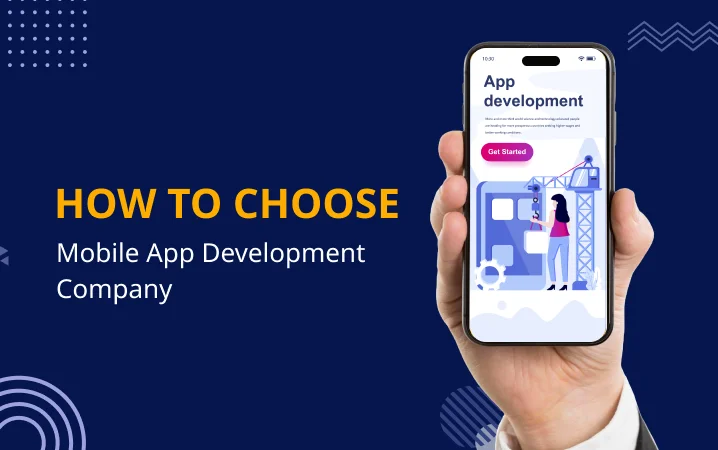Imagine you have spent months or years developing a groundbreaking mobile app, pouring your heart and soul into every line of code.
You must be excited to launch it, confident it will revolutionize how people interact with technology. But as you release it globally, you quickly realize that your app struggles to gain traction in certain markets.
What went wrong?
The answer lies in the often overlooked but crucial aspect of mobile app security testing, i.e., Localization.
In this digital world, where smartphones have become an extension of our daily lives, adapting your app to different languages, cultures, and user preferences has become necessary.
Through this blog post, we will delve into the significance of mobile app localization in ensuring success on a global scale.
Understanding Localization & Its Impact
Localization refers to adapting a mobile app to meet a specific target market’s linguistic, cultural, and functional requirements. It involves:
- Translating the app’s content
- Modifying its design elements
- Incorporating region-specific features
However, the impact of effective localization cannot be overstated.
Let’s delve into each of these aspects:
1. User Engagement
When a mobile app is localized, it becomes more accessible & relatable to users in different regions. They feel a stronger connection to the app, leading to increased engagement.
2. Customer Satisfaction
Businesses provide a personalized experience by tailoring the app to suit the preferences & expectations of users in different regions. This includes using region-specific date formats, currencies, and measurement units and incorporating local holidays/events.
3. Business Expansion
Businesses tap into previously untapped markets & reach a wider audience by adapting the app to suit the needs of different regions. As a result, they expand their customer base, increase revenue streams, and establish a global presence via application development services.
Expand reach, boost engagement, and maximize revenue with expert localization strategies.
Challenges in Global App Adoption
Launching a mobile app in multiple markets has several challenges that businesses must address. Ignoring localization can lead to miscommunication, cultural insensitivity, and user dissatisfaction.
So, investing in localization is crucial for successful global app adoption, building a strong brand presence, and driving business growth.
Let’s explore some of the key challenges & the potential pitfalls of ignoring localization:
1. Language/Communication
Users engage most with an app that speaks their language, as it creates a sense of familiarity and trust. Ignoring language localization can make users feel disconnected from the app, leading to lower adoption rates and user dissatisfaction.
2. Cultural Sensitivity
Each region has its cultural norms, values, and preferences. Ignoring these nuances can lead to cultural insensitivity, which can be detrimental to the success of an app.
3. User Experience
Mostly, users expect intuitive, user-friendly, and relevant apps. Ignoring localization can lead to frustration, confusion, and user dissatisfaction.
4. Market Competition
Users tend to gravitate towards apps that understand and cater to their needs. Businesses need to pay more attention to localization to avoid losing market share to competitors who have successfully localized their apps, resulting in missed opportunities for growth and expansion.
Pro Tip: You can hire app developers in India to avoid such challenges.
Also read: The Top Mobile App Development Companies To Watch In 2023
Key Components of Mobile App Localization
We must consider several crucial components when localizing a mobile app for different markets.
Businesses can ensure a seamless user experience by adapting these elements and top mobile app development frameworks to suit the target audience’s language, culture, and preferences.
Let’s explore the key components that require localization:
1. User Interface
UI is a fundamental component of any mobile app. Localizing the UI involves translating all the text elements into the target language. These elements include:
- Buttons
- Menus
- Labels
- Notifications
It is essential to ensure that the translated text fits within the allocated space & maintains the app’s overall design integrity. Adapting the UI to the target language enhances usability and creates a sense of familiarity and comfort for users.
2. Content
Localizing the mobile app’s content goes beyond translating words. It involves adapting the content to suit the cultural nuances & preferences of the target audience. This includes modifying the following elements to align with the local culture.
- Text
- Images
- Multimedia
By localizing the content, businesses can effectively communicate their message & connect with users on a deeper level.
Also read: How AI is Changing Software Testing Forever?
3. Graphics & Visuals
Graphics and visuals play a significant role in user engagement & brand perception. When localizing an app, it is crucial to consider the cultural relevance of the graphics used.
This involves replacing or modifying the following elements to align with the target audience’s preferences.
- Images
- Icons
- Colors
- Visual elements
Adapting the graphics ensures that the app feels native to the users, enhancing their overall experience and fostering a stronger connection.
4. Date Formats & Units
Date formats, time zones, and measurement units vary across different regions. Neglecting to localize these elements can lead to confusion and frustration for users.
It is essential to adapt the app to display the following elements in formats that are familiar and intuitive to the target audience:
- Date
- Time
- Measurements
This attention to detail demonstrates a commitment to providing a user-friendly experience and avoids misunderstandings.
5. Linguistic Accuracy & Cultural Relevance
Localization is not just about translating words; it requires linguistic accuracy & cultural relevance. Translations must be accurate, contextually appropriate, and free from grammatical errors.
Additionally, understanding the cultural nuances and preferences of the target audience is vital to ensure that the localized app is culturally relevant and resonates with users.
Elevate user experience and expand reach with expert app localization services.
The Role of Localization in Mobile App Testing
Localization plays a crucial role in the mobile app security testing process. It involves adapting an app to suit a specific target market’s linguistic, cultural, and functional requirements.
Businesses can identify & address any issues by thoroughly testing localized versions of the app. This ensures the localized app meets users’ expectations in different markets and contributes to a thriving global app launch.
Let’s explore the significance of testing localized versions in detail:
1. Functionality Testing
When localizing a mobile app, ensuring that all its features & functionalities work seamlessly in the target language and cultural context is crucial.
Functionality testing involves verifying that the app’s core features, such as:
- Navigation
- Data input
- Interactions
This type of mobile app security testing phase ensures that the localized app performs flawlessly and meets users’ expectations in different markets.
2. Usability Testing
Usability testing focuses on evaluating how easy & intuitive the app is for the target audience. When testing a localized version, it is essential to assess the following things that align with the cultural preferences & expectations of the target market.
- App’s user interface
- Content
- Navigation
Usability testing helps identify usability issues, such as confusing translations, misplaced buttons, or cultural insensitivities. It allows for necessary adjustments to enhance the user experience.
3. Linguistic & Cultural Testing
Linguistic testing involves:
- Verifying the accuracy of translations
- Checking for grammatical errors
- Ensuring that the app’s content is appropriate
Cultural testing assesses whether the app respects and aligns with the target audience’s cultural norms, values, and sensitivities. This includes evaluating the app’s:
- Visuals
- Symbols
- Colors
- Cultural elements
By conducting linguistic and cultural testing, businesses can ensure that the localized app effectively communicates with users and avoids potential misunderstandings or cultural insensitivities.
4. Compatibility Testing
This type of testing is essential to ensure that the localized app functions seamlessly across:
- Different devices
- Operating systems
- Screen sizes
It involves testing the app on various devices & configurations to identify any compatibility issues that may arise due to localization.
5. Performance Testing
Performance testing is crucial for assessing the localized app’s speed, responsiveness, and stability. It involves testing the app under the following scenarios to identify performance bottlenecks or issues.
- High user loads
- Poor network conditions
By conducting performance testing on localized versions, businesses can ensure that the app performs well and meets users’ performance expectations in different markets.
Further reading: Mobile App Development Tips That Will Boost Start-Ups Growth
Localization Testing Checklist: Areas to Test During Localization Quality Assurance
When conducting localization quality assurance for a mobile app, it is essential to cover various areas to ensure a seamless user experience.
Thorough mobile app security testing in these areas helps identify and address issues before launching the app in different markets, ensuring a successful global expansion.
Here is a checklist of key areas to test during the localization process:
1) Language
- Verify the accuracy and appropriateness of translations.
- Check for grammar, spelling, and punctuation errors.
- Ensure that the translated content conveys the intended meaning.
- Aligns with the target audience’s language preferences.
2) Formatting
- Ensure it fits within the allocated space.
- Maintains the app’s design integrity.
- Pay attention to text expansion or contraction that may occur during translation.
3) Cultural Conventions
- Assess whether the app adheres to the cultural conventions & norms of the target market.
- Verify that date formats, time formats, number formats & currency symbols.
- Aligns with the local conventions.
4) User Interface Elements
- Test the translated user interface elements like buttons, menus, etc.
- Verify that the UI elements are culturally relevant.
- Align with the target audience’s expectations.
5) Input Methods
- Test the compatibility & functionality of input methods.
- Verify support for different keyboard layouts, input methods, and character sets.
- Ensure that the app handles input correctly.
- Provides a seamless user experience.
6) Legal & Regulatory Compliance
- Verify that the localized app complies with the legal ®ulatory requirements
- Checking for any necessary disclaimers, privacy policies, terms of service, and other legal documentation
7) Graphics & Layout
- Test the graphics, images, icons, and other visual elements to check if they are culturally appropriate and visually appealing.
- Verify that the layout and design elements are not compromised during the localization process.
8) Documentation and Help
- Test the translated documentation & user guides.
- Help files to ensure they are accurate and precise and provide relevant information to users.
- Verify that the localized documentation is easily accessible.
- Supports the target audience’s language & cultural needs.
9) Localization Workflow
- Evaluate the overall localization workflow.
- Assess the collaboration between translators, developers, and testers, as well as the tools and processes used for localization.
- Identify any bottlenecks or areas for improvement to streamline the localization process.
Elevate user experience with comprehensive localization quality assurance.
Localization Testing Tools
Localization testing tools help streamline collaboration, manage test cases, track progress, and simulate target environments, ultimately ensuring that the localized app meets the highest quality standards.
Here are some essential localization mobile app security testing tools that can streamline and enhance the testing efforts:
1. Translation Management Systems
These tools help manage the translation workflow, allowing businesses to collaborate with translators, track progress, and maintain consistency across different languages and versions of the app.
TMS tools often include features such as:
- Translation memory
- Terminology management
- Workflow automation
2. Test Management Tools
These tools provide a centralized platform to plan, track, and manage test cases, test data, and test results. Test management tools can:
- Enable testers to create & execute test plans tailored explicitly for localized app versions.
- Help in tracking and reporting issues.
- Ensure that any localization-related bugs or inconsistencies are identified and resolved effectively.
3. Environment Simulation Tooling
These tools allow testers to simulate various factors, such as language settings, time zones, date formats, and regional preferences.
This helps identify any issues related to:
- Language support
- Cultural conventions
- Regional Settings
Furthermore, human testers play a crucial role in evaluating linguistic accuracy, cultural relevance, and overall user experience, which cannot be fully automated. The combination of localization testing tools & human expertise ensures a comprehensive and robust localization testing approach.
Read this blog: From Idea To Launch: The Ultimate Guide To App Development Share
Challenges in Mobile App Localization Testing
Localization testing is a crucial aspect of ensuring the success of a mobile app in international markets. However, it comes with challenges that are important to address for a seamless user experience.
Let’s explore some of the key challenges in mobile app localization testing:
1. Cultural Sensitivity & Adaptation: Each culture has its values, beliefs, and customs that must be considered during the localization process.
2. Language Accuracy & Communication: Translating content from one language to another requires more than word-for-word conversion. It involves understanding the target language’s nuances, idioms, and expressions to convey the intended message accurately.
3. Technical Challenges & Performance: Adjusting UI layouts to accommodate varying text lengths can be a significant hurdle. Text expansion or contraction can affect the overall design and functionality of the app. Additionally, handling non-Latin scripts, such as Arabic or Chinese, requires special attention to ensure proper rendering and readability.
4. Compatibility & Functionality: This includes testing the app’s compatibility with various devices, operating systems, and screen resolutions commonly used in the target markets.
Read this blog: An Overlook to the Future of Mobile Application Development
Best Practices for Effective Localization Testing
Effective localization mobile app security testing enhances user satisfaction and contributes to your mobile app’s overall success and growth in international markets.
Hence, it is essential to follow the best practices during the localization testing process to achieve accurate & high-quality localized versions of your app. You can also outsource mobile application testing services to a reliable company in India.
Here are some actionable tips to help you conduct effective localization testing:
1. Involve Native Speakers
You can ensure that the localized app resonates with the target audience & meets their expectations by involving native speakers as testers or consultants.
Their expertise can help identify the following:
- Linguistic inaccuracies
- Cultural insensitivities
- Specific usability issues
2. Leverage Localization Tools
Translation management systems, terminology databases, and localization testing platforms can help with:
- Managing translations
- Maintaining consistency
- Automating testing workflow
These tools can improve efficiency, accuracy, and collaboration among testers, translators, and developers.
3. Conduct Thorough QA Checks
Localization testing should encompass comprehensive QA checks to ensure the localized app’s functionality, usability, and overall user experience. This includes:
- Functional testing verifies that all features work as intended.
- Usability testing assesses the app’s ease of use.
- Compatibility testing ensures the app functions seamlessly across different devices and platforms.
- Linguistic & cultural testing to validate translations, check for cultural appropriateness, and ensure compliance with local conventions.
4. Test in Realistic Environments
You can identify & address issues related to language support, cultural conventions, and regional preferences by testing in realistic environments.
This includes the setting:
- Language
- Date formats
- Time zones
5. Iterate & Refine
Localization mobile app security testing is an iterative process. It is important to gather feedback from users, testers, and stakeholders and use it to refine the localized app.
Continuously iterate & improve the app based on the following:
- User Feedback
- Bug reports
- Market Insights
Elevate user satisfaction and global app success with proven testing practices.
Conclusion
So far, we have seen how mobile apps have become a vital tool for businesses to reach a global audience. However, more than translating an app into different languages, it is required to ensure its success in international markets.
Localization plays a crucial role in mobile app security testing.
By investing time and resources into comprehensive localization testing, businesses can create a seamless user experience, build trust with their international users, and maximize their app’s potential for global success.
Always remember that localization is the primary key to unlocking a mobile app’s full potential. Furthermore, you can hire mobile app developers from ValueCoders (a leading mobile app development company in India) that has successfully delivered 4200+ projects till today.
Feel free to contact us!

